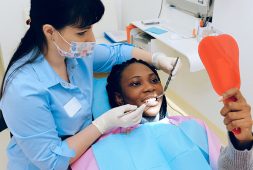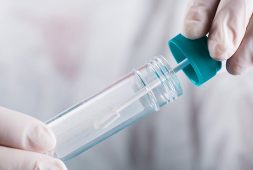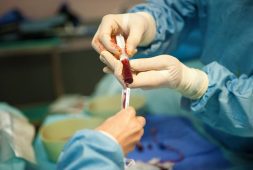
Results from a recent small study have shown remarkable results. Two stroke patients that were given an implanted device built to help stimulate the spinal cord have shown progress in their arm and hand mobility. They managed to do a simple daily task for the first time in years, using a fork to eat a meal for the first time since their stroke.
The study, which was published in Nature Medicine journal, explained how the scientists implanted a pair of thin metal electrodes along the necks of the patients in order to stimulate activity in their spinal cord. Both of the study participants and stroke patients were diagnosed with hemiparesis.
According to the American Stroke Association, this is a common post-stroke condition that tends to cause weakness on one side of the body, limiting the movements needed by patients to do simple tasks and activities, such as walking, dressing, bathing, and eating.
Senior study author and director of spinal cord stimulation laboratory at the University of Pittsburgh, Marco Capogrosso, PhD, said in a statement, “We discovered that electrical stimulation of specific spinal cord regions enables patients to move their arm in ways that they are not able to do without the stimulation.”
Dr. Capogrosso also said, “Perhaps even more interesting, we found that after a few weeks of use, some of these improvements endure when the stimulation is switched off, indicating exciting avenues for the future of stroke therapies.”
More Research Is Needed Before Spinal Stimulation Is Commonly Used
Regardless of the early success of the study, there are still many questions left unanswered. For example, both participants in the study had their stroke many years before they began treatment using electrical spinal cord stimulation. The problem with this is it’s not yet clear if the technology could actually immediately help someone who just had a stroke. This is also why additional human trials with more participants will be needed to verify whether the technology is truly safe and effective for widespread use.
As for Marc Powell, PhD, president and chief executive officer of Reach Neuro, who happens to be developing this technology, he explains that even if the trials and additional testing have positive results, it could still be another 7 to 10 years before a device like this could actually get approved by the U.S. Food and Drug Administration (FDA), especially one that will be used to restore movement after a stroke.
As explained by Cleveland Clinic, spinal cord stimulation technology involves placing a group of electrodes on the surface of the spinal cord, which sends out electrical pulses to stimulate nerve cells within the spinal cord. This approach, which is also referred to as neuromodulation, has been used for a considerable time to alleviate different types of chronic pain that result from conditions like nerve damage and diabetes.
In recent years, scientists have also begun testing spinal cord stimulation as a possible tool to help restore movement in those with paralysis or limited movement after they’ve had a stroke or injury.
Studies Show Spinal Stimulation Helps Paralysis After Injury
A study published in The New England Journal of Medicine back in 2018 found that electrical stimulation to the spinal cord can help restore some movement to those with paralysis. Meanwhile, another one published in Nature Medicine sometime in 2022 saw how technology helped three men that were paralyzed after a motorcycle collision, yet they managed to walk once again. Yet another study from Brain journal, also published in 2022, found that electrical stimulation helped restore some arm movement after the patient had a spinal cord injury.
At the moment, the American Stroke Association shares that the current treatment for one-sided weakness that comes after a stroke can include the following: targeted physical therapy, electrical stimulation of the muscles, as well as assistive mobility devices, such as canes, walkers, braces, and wheelchairs.



